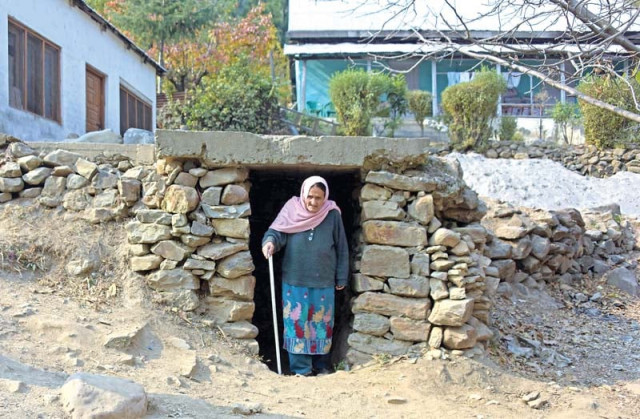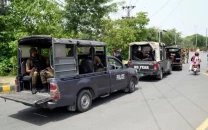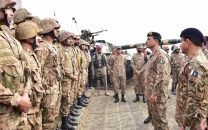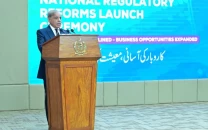Security measures: Rush to build bunkers in AJK as fears grow
Residents pay thousands to build underground shelters

A Kashmiri woman walks out of an underground bunker in Neelum Valley. PHOTO: AFP
Months of tension between India and Pakistan have erupted into shellings and gunfire along the Line of Control, claiming the lives of dozens of people, including civilians.
People in the valley say the attacks come once or twice a week, and they never know when they might have to dive for cover.
Chand Bibi has concrete and steel rods waiting to be transformed into an underground bunker where her terrified family can take shelter as the monstrous boom of shelling reawakens old nightmares.
“You are talking about fear,” the 62-year-old says. “We are near to dying at the moment we hear the boom.
“The voice of the guns is horrible.”
When it comes, Bibi and her relatives pile blankets, quilts and clothes on top of their children to muffle the noise and their panic.
Soon the extended family of about 20 people will be able to flee underground to the bunker they have paid Rs300,000 to build -- just under the cost of constructing a mud house in the valley, where the average worker makes around Rs800 per day.
Sultan Ahmed is spending even more: up to Rs500,000 for a three metre by four metre (10 foot by 14 foot) space reinforced by more than 20 centimetres of concrete, fortified with steel rods, and buried under nearly a metre of soil.
Some 25 people will be able to take shelter inside the bunker once it is completed, the 47-year-old teacher says. Local mason Ghulam Hussain tells AFP his business has increased because of the renewed violence, as he packs his tools after finishing a bunker at one house to rush to another and start again.
Around half a million people live within range of Indian fire along the Pakistani side of the Line of Control, according to Farooq Haider Khan, leader of Azad Kashmir.
He says the government plans to build “community bunkers”.
Since AFP’s visit the Neelum Valley has been cut off.
Cross-border firing hit a civilian bus there on November 23, killing at least nine people, one of the highest one-day tolls since the latest unrest began.
In response authorities shut down the main road connecting Muzaffarabad with the valley.
Before the valley was closed, many residents told AFP they could not afford to leave and had nowhere to go.
Others, however, said they refused to be driven away. Those who cannot pay the high cost of transporting bunker materials from Kashmir’s main cities to the remote valley are fortifying their homes in whatever way they can.
Published in The Express Tribune, December 1st, 2016.


















COMMENTS
Comments are moderated and generally will be posted if they are on-topic and not abusive.
For more information, please see our Comments FAQ